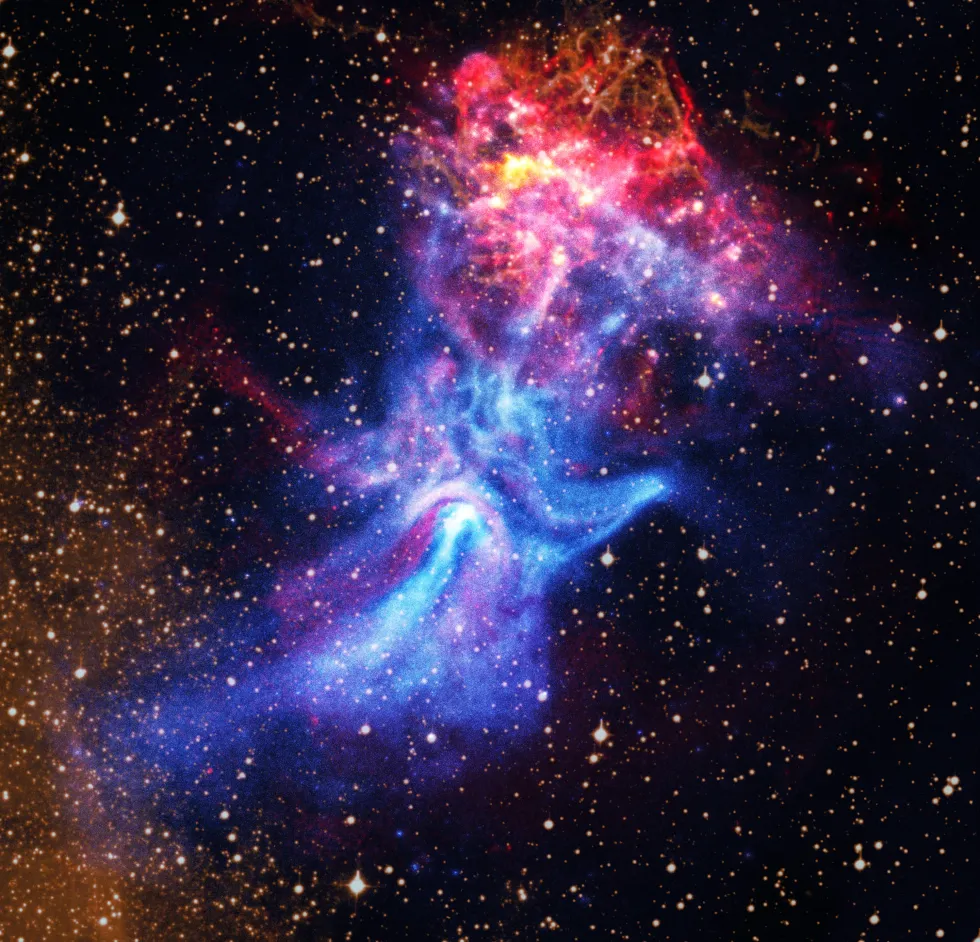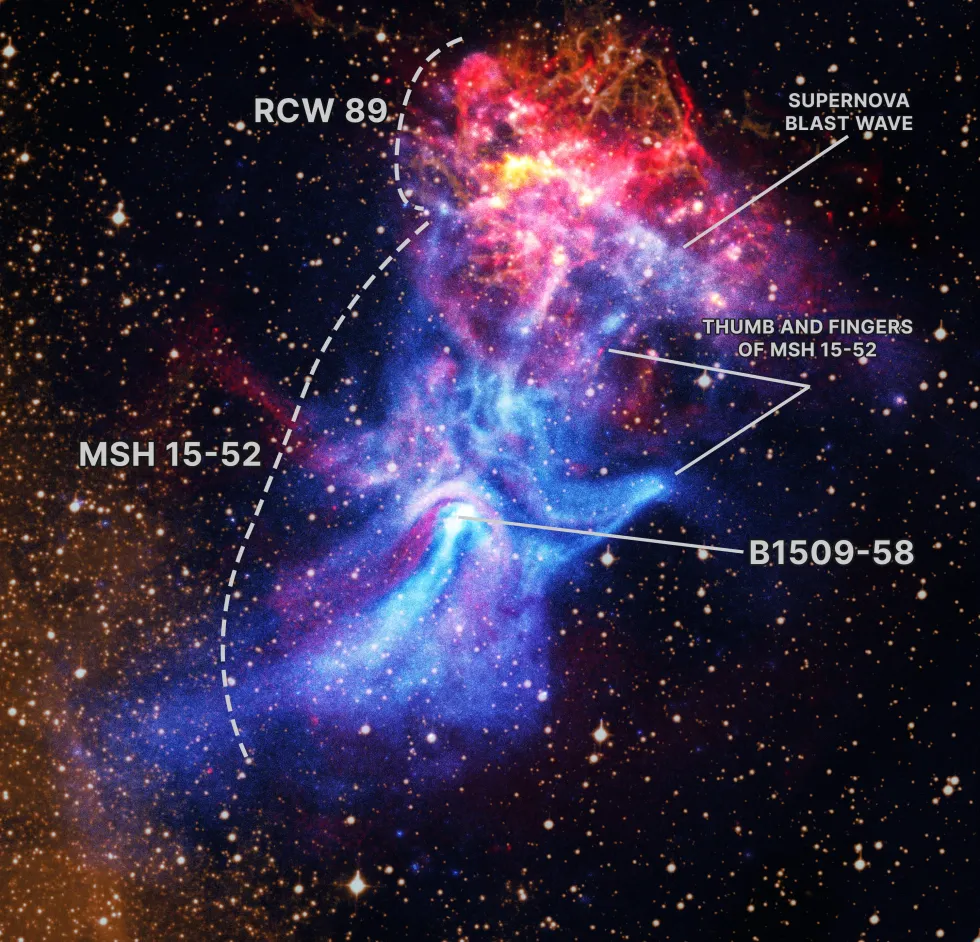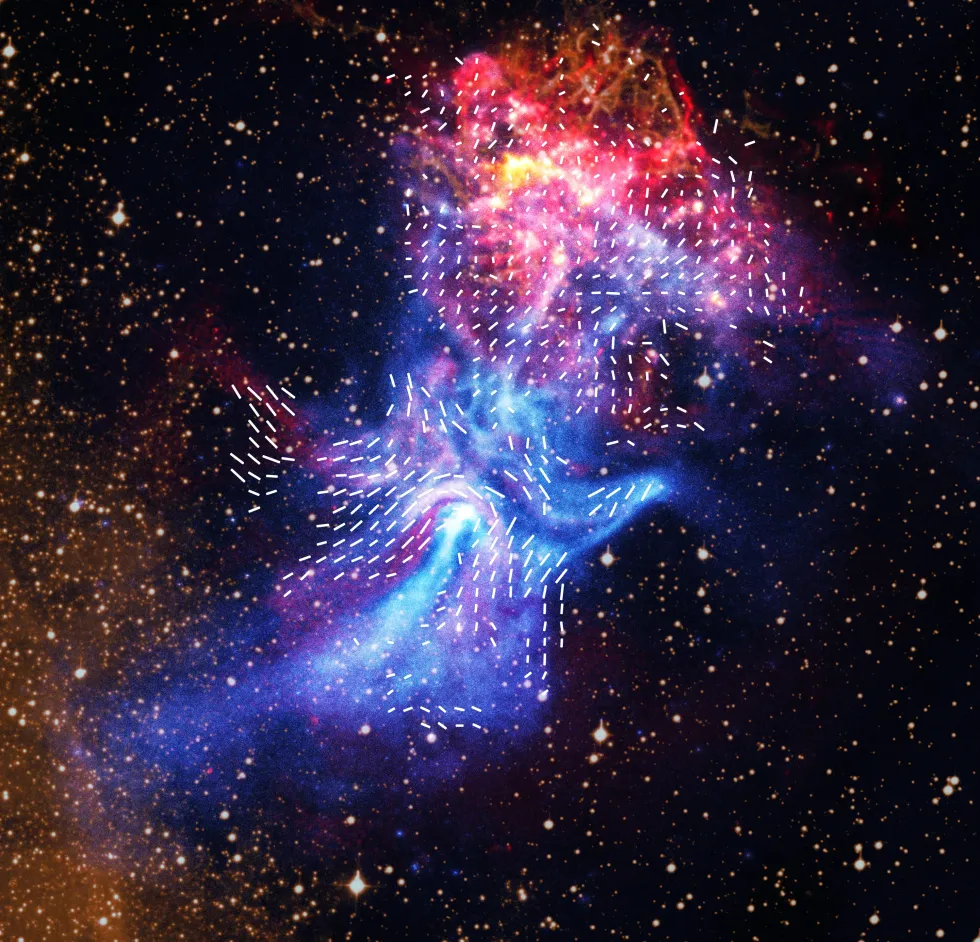'Hand of God' spotted by Nasa satellites as astronomers left stunned by new images

Eerie new photos have been released of the 150-lightyear-wide 'cosmic hand'
Don't Miss
Most Read
Nasa satellites have released new images of the so-called "Hand of God" nebula in the depths of space.
Eerie new photos have been released of the 150-lightyear-wide gas cloud - which resembles an outstretched hand reaching through the cosmos.
Nasa combined X-ray data from its Chandra X-ray Observatory with radio observations from Australia's telescope array, handing astronomers their most detailed view yet of the pulsar B1509-58 and the surrounding nebula.
The "Hand of God" measures almost 900 trillion miles across space - 75 times the size of the solar system.

Nasa satellites have released new images of the so-called 'Hand of God' nebula in the depths of space
|NASA
At its heart lies a pulsar just 12 miles across, spinning at a rate of almost seven times per second.
A pulsar is a type of neutron star, or the collapsed core of an exploded star, while a nebula is a giant cloud of gas and dust.
Some nebulae are the birthplaces of new stars, which form after enormous clouds of hydrogen gas fall closer together.
The nebula around B1509-58, however, is the remnant of an exploded star's debris blasted into space by a supernova.
The "Hand of God"'s magnetic field is thought to be around 15 trillion times that of Earth's.
LATEST SPACE HEADLINES FROM GB NEWS:
- 'Habitable' dwarf planet in OUR solar system had 'conditions for alien life', Nasa reveals
- 'Accidentally calling aliens!' Expert says signals could reach 500 star systems
- WATCH: Moment mysterious fireball lights up night sky as locals 'feel the air shaking'
- Scientists left baffled after 'alien helmet' spotted on surface of Mars

Nasa also released a labelled image of the nebula
|NASA
The field drives charged particles outward and shapes them into a hand-like structure, known as MSH 15-52.
While Nasa first captured the "hand" in 2009, the new images shed light on as-yet unseen details.
Radio-wave data shows the hand's "bones" - filaments tracing along the edge of the nebula's magnetic field.
There are also clear differences between the X-ray photos and radio data.

Radio data from ATCA now reveals complex filaments that are aligned with the directions of the nebula's magnetic field
|NASA
Features such as a jet near the pulsar and the inner regions of three “fingers" glow brightly in X-rays but cannot be seen in radio light.
Nasa also shed light on RCW 89, the nearby remnants of a supernova. RCW 89 appears patchy, with clumps of X-ray, radio, and optical emissions all visibly interwoven with each other.
"This object continues to surprise us," the University of Hong Kong's Shumeng Zhang, wrote in the study, published in The Astrophysical Journal.
"By combining different types of light, we're uncovering new details about how pulsars and supernova remnants interact," she added.










